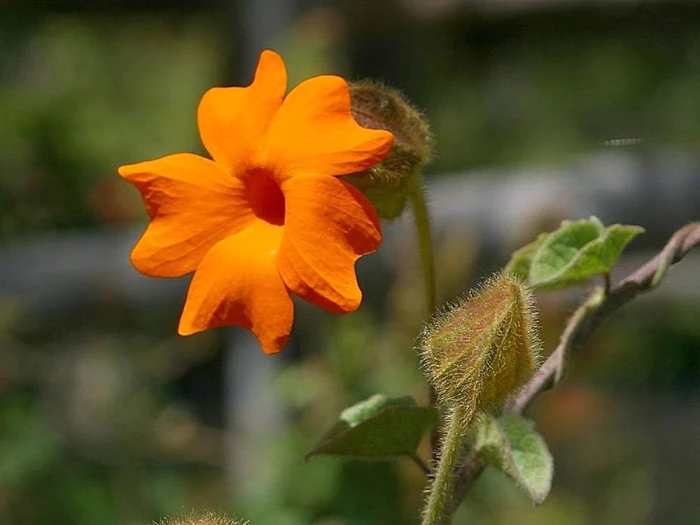Orange Clockvine
(Thunbergia gregorii)
Orange Clockvine (Thunbergia gregorii)
/
/

Jon Sullivan
Public domain
Image By:
Jon Sullivan
Recorded By:
Copyright:
Public domain
Copyright Notice:
Photo by: Jon Sullivan | License Type: Public domain | License URL: https://creativecommons.org/public-domain/ | Uploader: Fæ | Publisher: Wikimedia Commons | Title: Flowers_vines_plants_pods.jpg | Notes: == Beschreibung == {{Information |Description=Thymus_praecox (de: Langhaariger_Thymian) nearby [[Seyðisfjörður]] in [[Iceland]] |Source=self taken foto |Date=5. July 2007 |Author= [[:de:User:Jutta234]] |Permission= GFDL, CC-BY-SA |other_versions= }} |














Estimated Native Range
Climate Requirements for Pensacola, Florida
| This Plant | Your Site | Plant Suitability for Your Location | ||
|---|---|---|---|---|
| • Precipitation | 12" - 66" | 64" | Aquatic | Aquatic |
| • High Temp. | 69°F - 94°F | 91°F | Your summer temperatures are normal for this plant. | Excellent |
| • Low Temp. | 39°F - 60°F | 42°F | Your winter temperatures are normal for this plant | Excellent |
This plant may not grow well at your location - your precipitation is too high.
Summary
Thunbergia gregorii, commonly known as Orange Clockvine or Orange Trumpet Vine, is a fast-growing, evergreen perennial vine native to East Africa, particularly in Kenya and Uganda, where it thrives in open woodlands and scrub areas. It can reach a height of 8–10 feet tall and, without support, can spread extensively as ground cover. The vine is adorned with bright, pure orange, trumpet-shaped flowers that bloom throughout the year in warmer climates and from summer to autumn in cooler regions. These showy flowers are particularly attractive to hummingbirds and butterflies, adding to the plant’s ornamental value.
Orange Clockvine is celebrated for its vibrant flowers and has earned the Royal Horticultural Society’s Award of Garden Merit. It is ideal for trellises, fences, and arbors in urban gardens, patios, and as a decorative screen. In cultivation, it requires full sun to partial shade, well-drained soil, and regular watering, especially during dry periods. While it is hardy to -1°C, it benefits from protection in cooler climates. Gardeners should be cautious as Thunbergia gregorii can become invasive outside its native range, and it is advisable to check local regulations before planting.CC BY-SA 4.0
Orange Clockvine is celebrated for its vibrant flowers and has earned the Royal Horticultural Society’s Award of Garden Merit. It is ideal for trellises, fences, and arbors in urban gardens, patios, and as a decorative screen. In cultivation, it requires full sun to partial shade, well-drained soil, and regular watering, especially during dry periods. While it is hardy to -1°C, it benefits from protection in cooler climates. Gardeners should be cautious as Thunbergia gregorii can become invasive outside its native range, and it is advisable to check local regulations before planting.CC BY-SA 4.0
Plant Description
- Plant Type: Vine
- Height: 3-5 feet
- Width: 4-5 feet
- Growth Rate: Rapid
- Flower Color: Orange
- Flowering Season: Summer, Fall
- Leaf Retention: Evergreen
Growth Requirements
- Sun: Full Sun
- Water: Low
- Drainage: Medium
Common Uses
Bee Garden, Bird Garden, Butterfly Garden, Groundcover, Hummingbird Garden, Salt Tolerant, Showy Flowers
Natural Habitat
Native to East Africa, particularly in Kenya and Uganda, thriving in open woodlands and scrub areas
Other Names
Common Names: Orange Trumpet Vine
Scientific Names: Thunbergia gregorii, Thunbergia aureosetosa, Thunbergia exasperata, Thunbergia longepedunculata, Thunbergia longipedunculata
GBIF Accepted Name: Thunbergia gregorii S.Moore